#Jane posting
Explore tagged Tumblr posts
Text

Miss her
516 notes
·
View notes
Text
Conleth has made his... Disruptive return. A few people escorted him back. At least he made some company. [J]
Happy New Year to all. [J]
2 notes
·
View notes
Text
One of the things I loved about The Wild Robot from a writing/world-building perspective was that it was clearly set in a post-apocalyptic world, but the details were very vague, and you don't even know until about an hour in:

"Beautiful shot," you think, and then it hits you that the whales are swimming over the Golden Gate Bridge.


Abandoned, crumbling satellites and a sunken city. And then when we do see the human city, they freak out at the sight of geese:

Animal-derived plague? Global warming? We don't know. We only know that something has happened. But like the general theme, whatever bad has occurred, the natural world is thriving. An unexpected positive from a history of tragedy.
#worldbuilding#the wild robot#It reminded me of Adventure Time#it's set in a post-apocalyptic world but you only get hints for a long time#we don't need a huge explanation#the story works without it#post apocalypse#spoilers#movies#not jane austen#planning on reading the book now that I know it exists
4K notes
·
View notes
Text
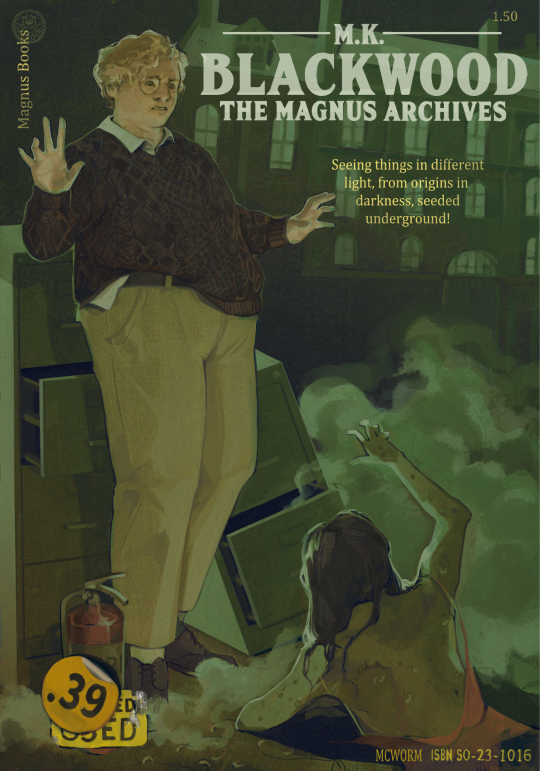
mr Blackwood for the @mycupofteafanzine <3
3K notes
·
View notes
Text
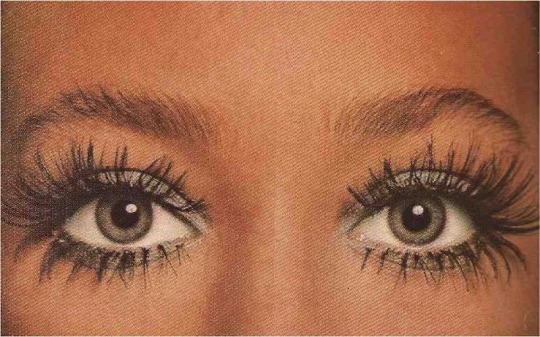

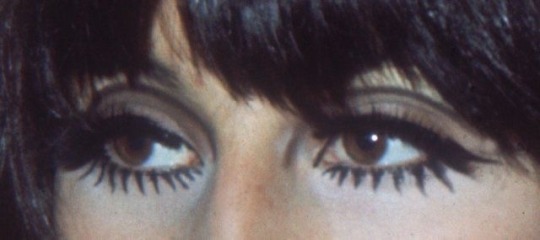
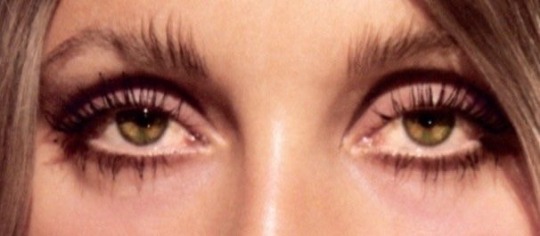
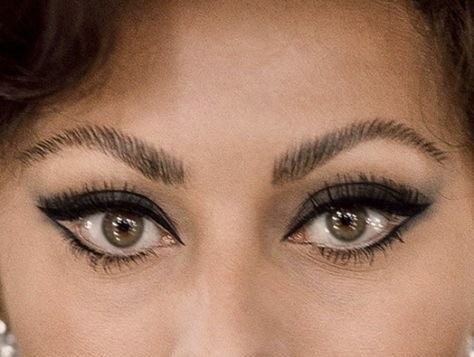


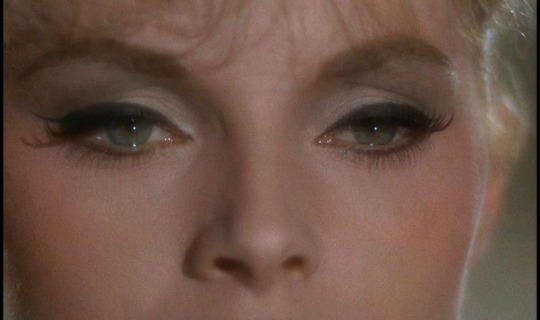
Current Obsession: 60s eye makeup 💄🐈⬛🪄👜📿👢
#i’m just a girl#coquette#vintage#60s#70s#girlblogger#lust for life#jane birkin#sophia loren#bridget bardot#sharon tate#old hollywood#eye makeup#60s makeup#lana del rey#lizzy grant#girlrotting#60s fashion#just girly posts#pinterest#catherine deneuve#david bowie
12K notes
·
View notes
Text
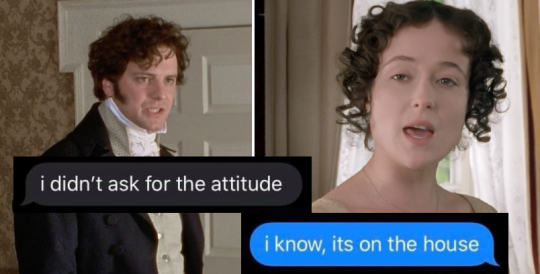
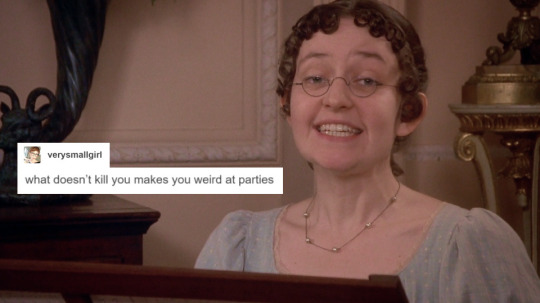
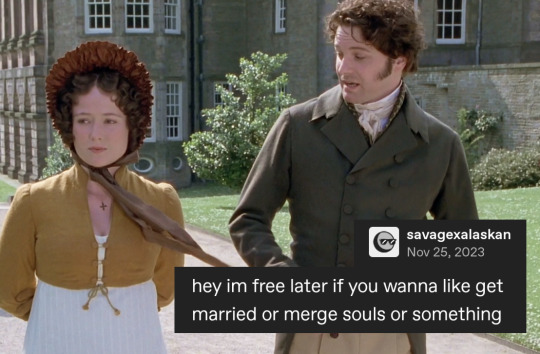

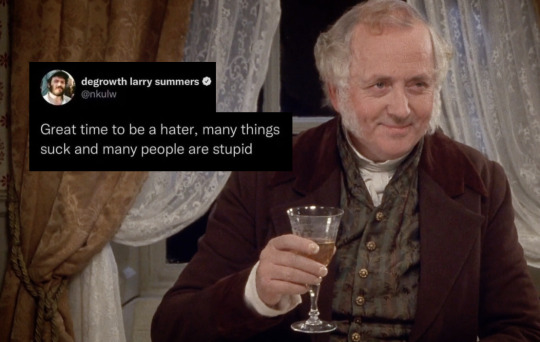
Pride and Prejudice 1995 text posts, part 6 of ? - prev set
More: Persuasion 1995 text posts | Sense and Sensibility 1995 text posts | Northanger Abbey 2007 text posts | Emma. 2020 text posts
#pride and prejudice memes#pride and prejudice#jane austen memes#jane austen#english lit memes#text posts#pnp text posts#pride and prejudice 1995#mr darcy#elizabeth bennet#mary bennet#mr bennet#mr wickham#georgiana darcy#my stuff#1k#2k#3k
3K notes
·
View notes
Text
I saw this play a while back called "Pride and Prejudice* (*sort of)", which was a comedic retelling of the events of P&P by five female servants. (Who all worked in the Bennet household, I believe? Cannot remember the exact setting at this point.)
It was very much in an "low-budget improv troupe" style (though it was not actually improv), so Mr. Bingley's exaggerated "love at first sight" meeting with Jane happened while he had his hand stuck in a Pringles can. A karaoke machine made multiple appearances. If you were looking for historical accuracy or a perfect examination of the social nuances, this was not at all the play to watch, but it was pretty amusing, and it was interesting to think about P&P from the perspective of servants who may have only heard about certain events through gossip. Or who might just be mocking certain figures because they don't like them very much. At one point at a party, a tipsy Lydia got her hands on one of the soldiers' guns and fired it at the ceiling while people screamed. It was VERY silly.
Because there were only five actresses, they were switching between roles as needed, putting jackets or colorful dresses over their plain white dresses. The female servant who played the dramatic Mrs. Bennet also played the stiff Mr. Darcy. Another of the female servants played both Bingley siblings (Charles and Caroline) and also Charlotte Lucas, I think? Another played Mary, Lydia, and Mr. Collins, and also Mrs. Gardiner, I believe. Another played Jane, Georgiana Darcy, Mr. Wickham, and Lady Catherine, and so on. The female servant who played Elizabeth played her most of the time. The quick changes and mannerism shifts were quite funny.
But my favorite part may have been that Mr. Bennet was played by a chair. It was a comfy chair with its back to the audience and a newspaper propped up so that someone might be sitting there reading it, and at one point one of the servants went over to the chair to light a pipe, so that smoke rose from behind the chair. Characters talked to the chair sometimes, but the chair never talked back.
So, at one point, Mrs. Bennet was yelling and moaning about how the family was ruined. I think that Lydia, whom the embarrassing and overbearing Mrs. Bennet had been actively encouraging to be silly earlier, had run off with Mr. Wickham here. And Mrs. Bennet cried out, "OH, MR. BENNET, DO SOMETHING!!!"
And everyone on stage looked towards the chair with its back turned, which was fairly obviously empty, and which of course couldn't do anything by itself, because it was a chair. Dead silence again.
And then Mrs. Bennet went back to wailing and crying, while her daughters (Jane, Lizzy) patted her awkwardly on the back. And then I think the another actress came in as a servant to announce someone's arrival or something, moving the comedic retelling along. And that's probably what I remember best out of the entire play: Mr. Bennet could be effectively played by an empty chair with its back turned. It was hilarious.
5K notes
·
View notes
Text



the energy i'm bringing to linkedin | MY LADY JANE (2024)
#did i start watching this show for anna chancellor#yes and she did NOT let me down#and the show was a fun watch rip </3 you deserved to survive more than one season#anyway. society if people posted like this on linkedin... instead of whatever drivel goes on there all the time....#my lady jane#anna chancellor#tvedit
6K notes
·
View notes
Text

this drawing is almost a year old but i still kinda like it so i think it deserves to be set free
#tma#artrodent#tma fanart#the magnus archives#martin blackwood#jane prentiss#cw worms#i’m hyperfixated on crochet rn so i haven’t been drawing as much#but once i run out of yarn i’ll probably cough out some new stuff 👍👍👍#might post some more old art in the meantime
3K notes
·
View notes
Text
Judy and Lynn in Gaza
In the picture before you are Judy and Lynn, two young girls from Gaza, holding on to big dreams despite the harshness of war. Judy dreams of becoming a writer to share her people's struggles, while Lynn uses her small colors to paint a world full of hope.
However, the bombing deprived them of education, turning their school into rubble. Yet, they continue to persevere; Judy writes on torn papers, and Lynn draws on shattered walls.
Donate to support Judy, Lynn, and the children of Gaza. Their dreams will build the future.
vetted by gazavetters list at (#21) sami alkhlili
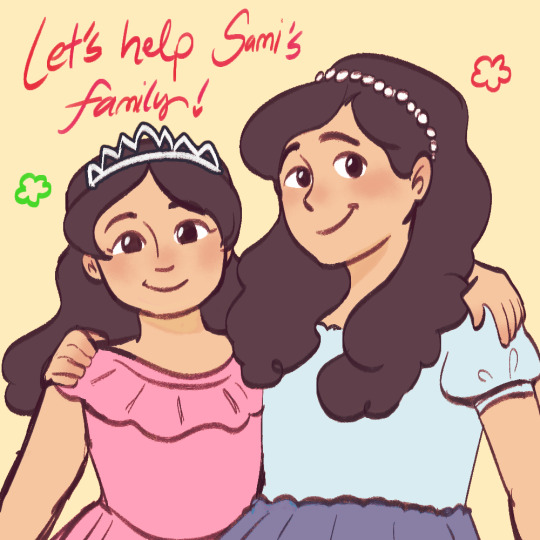
#gaza#palestine#my draws#my artwork#my art#my artwrok#artist on tumblr#shadow sonic#donald trump#history#free gaza#gaza genocide#gaza strip#free palestine#gazaunderattack#palestine fundraiser#save palestine#all eyes on palestine#animals#black and white#advertising#hazbin alastor#happy halloweeeeeeen#jane austen#japan#art process#text post#my photos#free use kink#artist on kofi
3K notes
·
View notes
Text

Wanted to try drawing something a little ornate, I think they’d make each other worse
#myart#creepypasta#crp#jane the killer#jane arkensaw#homicidal liu#jeff the killer#liu woods#if I was Jeff I’d try to kill him too#probably got tired of getting outmogged every morning#hey guys can I be honest#did not care for this drawing#did not care for it#but I spent the time so I’ll post lol hope someone out there enjoys it!#gonna draw some chill stuff for a bit#got an itching for eyeless jack#jtk#horror#also I think Liu is so pretty here. usually I’d try to avoid that a little but idk I kinda hc he’s pretty! idgaf!#creepypasta fanart#slenderman#not ship
3K notes
·
View notes
Text





Love u Robin Ellacott
#such a formidable queen#strike#bbc#robin ellacott#cormoran strike#holliday grainger#tom burke#gifset#crime shows#jane posting#my gifs
125 notes
·
View notes
Text
I do not think that boy remembers I have constant access here. Nor that I have notifications enabled. [J]
Conleth has left for this year. I know I am supposed to follow however I am inclined to believe he will “liveblog” his doings. Should he give reason to, I shall leave. [J]
0 notes
Text


My Lady Jane 1.07 "Another Girl, Another Planet"
#myladyjaneedit#my lady jane#perioddramaedit#jane x guildford#tvedit#tvgifs#userstream#dailytvfilmgifs#chewieblog#cinemapix#filmtvdaily#jane grey#guildford dudley#mine*#gifs*#mine: mlj#sorry for posting this (no im not) but this moment in specific wow#otp: I'll never leave you
4K notes
·
View notes
Text








frothing at the mouth over these chapter cover arts
#Zenless Zone Zero#zzzedit#Lighter Lorenz#ZZZ Lighter#Asaba Harumasa#Hoshimi Miyabi#Jane Doe#Burnice White#Piper Wheel#Caesar King#Qingyi#Tsukishiro Yanagi#ZZZ Wise#ZZZ Belle#my posts#my zzz
3K notes
·
View notes
Text
A Guide to Historically Accurate Regency-Era Names

I recently received a message from a historical romance writer asking if I knew any good resources for finding historically accurate Regency-era names for their characters.
Not knowing any off the top of my head, I dug around online a bit and found there really isn’t much out there. The vast majority of search results were Buzzfeed-style listicles which range from accurate-adjacent to really, really, really bad.
I did find a few blog posts with fairly decent name lists, but noticed that even these have very little indication as to each name’s relative popularity as those statistical breakdowns really don't exist.
I began writing up a response with this information, but then I (being a research addict who was currently snowed in after a blizzard) thought hey - if there aren’t any good resources out there why not make one myself?
As I lacked any compiled data to work from, I had to do my own data wrangling on this project. Due to this fact, I limited the scope to what I thought would be the most useful for writers who focus on this era, namely - people of a marriageable age living in the wealthiest areas of London.
So with this in mind - I went through period records and compiled the names of 25,000 couples who were married in the City of Westminster (which includes Mayfair, St. James and Hyde Park) between 1804 to 1821.
So let’s see what all that data tells us…
To begin - I think it’s hard for us in the modern world with our wide and varied abundance of first names to conceive of just how POPULAR popular names of the past were.
If you were to take a modern sample of 25-year-old (born in 1998) American women, the most common name would be Emily with 1.35% of the total population. If you were to add the next four most popular names (Hannah, Samantha, Sarah and Ashley) these top five names would bring you to 5.5% of the total population. (source: Social Security Administration)
If you were to do the same survey in Regency London - the most common name would be Mary with 19.2% of the population. Add the next four most popular names (Elizabeth, Ann, Sarah and Jane) and with just 5 names you would have covered 62% of all women.
To hit 62% of the population in the modern survey it would take the top 400 names.
The top five Regency men’s names (John, William, Thomas, James and George) have nearly identical statistics as the women’s names.
I struggled for the better part of a week with how to present my findings, as a big list in alphabetical order really fails to get across the popularity factor and also isn’t the most tumblr-compatible format. And then my YouTube homepage recommended a random video of someone ranking all the books they’d read last year - and so I present…
The Regency Name Popularity Tier List
The Tiers
S+ - 10% of the population or greater. There is no modern equivalent to this level of popularity. 52% of the population had one of these 7 names.
S - 2-10%. There is still no modern equivalent to this level of popularity. Names in this percentage range in the past have included Mary and William in the 1880s and Jennifer in the late 1970s (topped out at 4%).
A - 1-2%. The top five modern names usually fall in this range. Kids with these names would probably include their last initial in class to avoid confusion. (1998 examples: Emily, Sarah, Ashley, Michael, Christopher, Brandon.)
B - .3-1%. Very common names. Would fall in the top 50 modern names. You would most likely know at least 1 person with these names. (1998 examples: Jessica, Megan, Allison, Justin, Ryan, Eric)
C - .17-.3%. Common names. Would fall in the modern top 100. You would probably know someone with these names, or at least know of them. (1998 examples: Chloe, Grace, Vanessa, Sean, Spencer, Seth)
D - .06-.17%. Less common names. In the modern top 250. You may not personally know someone with these names, but you’re aware of them. (1998 examples: Faith, Cassidy, Summer, Griffin, Dustin, Colby)
E - .02-.06%. Uncommon names. You’re aware these are names, but they are not common. Unusual enough they may be remarked upon. (1998 examples: Calista, Skye, Precious, Fabian, Justice, Lorenzo)
F - .01-.02%. Rare names. You may have heard of these names, but you probably don’t know anyone with one. Extremely unusual, and would likely be remarked upon. (1998 examples: Emerald, Lourdes, Serenity, Dario, Tavian, Adonis)
G - Very rare names. There are only a handful of people with these names in the entire country. You’ve never met anyone with this name.
H - Virtually non-existent. Names that theoretically could have existed in the Regency period (their original source pre-dates the early 19th century) but I found fewer than five (and often no) period examples of them being used in Regency England. (Example names taken from romance novels and online Regency name lists.)
Just to once again reinforce how POPULAR popular names were before we get to the tier lists - statistically, in a ballroom of 100 people in Regency London: 80 would have names from tiers S+/S. An additional 15 people would have names from tiers A/B and C. 4 of the remaining 5 would have names from D/E. Only one would have a name from below tier E.
Women's Names
S+ Mary, Elizabeth, Ann, Sarah
S - Jane, Mary Ann+, Hannah, Susannah, Margaret, Catherine, Martha, Charlotte, Maria
A - Frances, Harriet, Sophia, Eleanor, Rebecca
B - Alice, Amelia, Bridget~, Caroline, Eliza, Esther, Isabella, Louisa, Lucy, Lydia, Phoebe, Rachel, Susan
C - Ellen, Fanny*, Grace, Henrietta, Hester, Jemima, Matilda, Priscilla
D - Abigail, Agnes, Amy, Augusta, Barbara, Betsy*, Betty*, Cecilia, Christiana, Clarissa, Deborah, Diana, Dinah, Dorothy, Emily, Emma, Georgiana, Helen, Janet^, Joanna, Johanna, Judith, Julia, Kezia, Kitty*, Letitia, Nancy*, Ruth, Winifred>
E - Arabella, Celia, Charity, Clara, Cordelia, Dorcas, Eve, Georgina, Honor, Honora, Jennet^, Jessie*^, Joan, Joyce, Juliana, Juliet, Lavinia, Leah, Margery, Marian, Marianne, Marie, Mercy, Miriam, Naomi, Patience, Penelope, Philadelphia, Phillis, Prudence, Rhoda, Rosanna, Rose, Rosetta, Rosina, Sabina, Selina, Sylvia, Theodosia, Theresa
F - (selected) Alicia, Bethia, Euphemia, Frederica, Helena, Leonora, Mariana, Millicent, Mirah, Olivia, Philippa, Rosamund, Sybella, Tabitha, Temperance, Theophila, Thomasin, Tryphena, Ursula, Virtue, Wilhelmina
G - (selected) Adelaide, Alethia, Angelina, Cassandra, Cherry, Constance, Delilah, Dorinda, Drusilla, Eva, Happy, Jessica, Josephine, Laura, Minerva, Octavia, Parthenia, Theodora, Violet, Zipporah
H - Alberta, Alexandra, Amber, Ashley, Calliope, Calpurnia, Chloe, Cressida, Cynthia, Daisy, Daphne, Elaine, Eloise, Estella, Lilian, Lilias, Francesca, Gabriella, Genevieve, Gwendoline, Hermione, Hyacinth, Inez, Iris, Kathleen, Madeline, Maude, Melody, Portia, Seabright, Seraphina, Sienna, Verity
Men's Names
S+ John, William, Thomas
S - James, George, Joseph, Richard, Robert, Charles, Henry, Edward, Samuel
A - Benjamin, (Mother’s/Grandmother’s maiden name used as first name)#
B - Alexander^, Andrew, Daniel, David>, Edmund, Francis, Frederick, Isaac, Matthew, Michael, Patrick~, Peter, Philip, Stephen, Timothy
C - Abraham, Anthony, Christopher, Hugh>, Jeremiah, Jonathan, Nathaniel, Walter
D - Adam, Arthur, Bartholomew, Cornelius, Dennis, Evan>, Jacob, Job, Josiah, Joshua, Lawrence, Lewis, Luke, Mark, Martin, Moses, Nicholas, Owen>, Paul, Ralph, Simon
E - Aaron, Alfred, Allen, Ambrose, Amos, Archibald, Augustin, Augustus, Barnard, Barney, Bernard, Bryan, Caleb, Christian, Clement, Colin, Duncan^, Ebenezer, Edwin, Emanuel, Felix, Gabriel, Gerard, Gilbert, Giles, Griffith, Harry*, Herbert, Humphrey, Israel, Jabez, Jesse, Joel, Jonas, Lancelot, Matthias, Maurice, Miles, Oliver, Rees, Reuben, Roger, Rowland, Solomon, Theophilus, Valentine, Zachariah
F - (selected) Abel, Barnabus, Benedict, Connor, Elijah, Ernest, Gideon, Godfrey, Gregory, Hector, Horace, Horatio, Isaiah, Jasper, Levi, Marmaduke, Noah, Percival, Shadrach, Vincent
G - (selected) Albion, Darius, Christmas, Cleophas, Enoch, Ethelbert, Gavin, Griffin, Hercules, Hugo, Innocent, Justin, Maximilian, Methuselah, Peregrine, Phineas, Roland, Sebastian, Sylvester, Theodore, Titus, Zephaniah
H - Albinus, Americus, Cassian, Dominic, Eric, Milo, Rollo, Trevor, Tristan, Waldo, Xavier
# Men were sometimes given a family surname (most often their mother's or grandmother's maiden name) as their first name - the most famous example of this being Fitzwilliam Darcy. If you were to combine all surname-based first names as a single 'name' this is where the practice would rank.
*Rank as a given name, not a nickname
+If you count Mary Ann as a separate name from Mary - Mary would remain in S+ even without the Mary Anns included
~Primarily used by people of Irish descent
^Primarily used by people of Scottish descent
>Primarily used by people of Welsh descent
I was going to continue on and write about why Regency-era first names were so uniform, discuss historically accurate surnames, nicknames, and include a little guide to finding 'unique' names that are still historically accurate - but this post is already very, very long, so that will have to wait for a later date.
If anyone has any questions/comments/clarifications in the meantime feel free to message me.
Methodology notes: All data is from marriage records covering six parishes in the City of Westminster between 1804 and 1821. The total sample size was 50,950 individuals.
I chose marriage records rather than births/baptisms as I wanted to focus on individuals who were adults during the Regency era rather than newborns. I think many people make the mistake when researching historical names by using baby name data for the year their story takes place rather than 20 to 30 years prior, and I wanted to avoid that. If you are writing a story that takes place in 1930 you don’t want to research the top names for 1930, you need to be looking at 1910 or earlier if you are naming adult characters.
I combined (for my own sanity) names that are pronounced identically but have minor spelling differences: i.e. the data for Catherine also includes Catharines and Katherines, Susannah includes Susannas, Phoebe includes Phebes, etc.
The compound 'Mother's/Grandmother's maiden name used as first name' designation is an educated guesstimate based on what I recognized as known surnames, as I do not hate myself enough to go through 25,000+ individuals and confirm their mother's maiden names. So if the tally includes any individuals who just happened to be named Fitzroy/Hastings/Townsend/etc. because their parents liked the sound of it and not due to any familial relations - my bad.
I did a small comparative survey of 5,000 individuals in several rural communities in Rutland and Staffordshire (chosen because they had the cleanest data I could find and I was lazy) to see if there were any significant differences between urban and rural naming practices and found the results to be very similar. The most noticeable difference I observed was that the S+ tier names were even MORE popular in rural areas than in London. In Rutland between 1810 and 1820 Elizabeths comprised 21.4% of all brides vs. 15.3% in the London survey. All other S+ names also saw increases of between 1% and 6%. I also observed that the rural communities I surveyed saw a small, but noticeable and fairly consistent, increase in the use of names with Biblical origins.
Sources of the records I used for my survey:
Ancestry.com. England & Wales Marriages, 1538-1988 [database on-line].
Ancestry.com. Westminster, London, England, Church of England Marriages and Banns, 1754-1935 [database on-line].
#history#regency#1800s#1810s#names#london#writing resources#regency romance#jane austen#bridgerton#bridgerton would be an exponentially better show if daphne's name was dorcas#behold - the reason i haven't posted in three weeks
12K notes
·
View notes